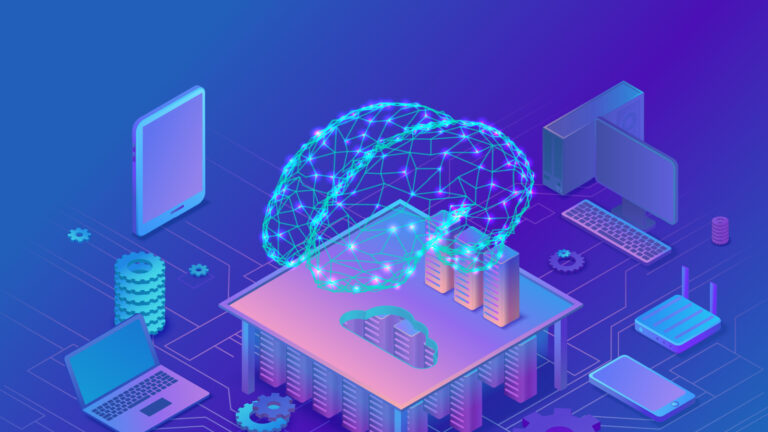Editor’s note: “Rags or Riches: Understanding the Best AI Bets” was previously published in May 2023. It has since been updated to include the most relevant information available.
There has been a ton of press on artificial intelligence (AI) recently. But in all the news articles I’ve read and TV snippets I’ve seen, I have yet to see anyone talk about AI’s little-known classifications. And it’s a secret that could be the difference between you striking fortunes in the AI Revolution or striking out.
Did you know that there are actually two types of AI?
In the scientific world, artificial intelligence is either known to be narrow or general.
Narrow AI is a system trained on a particular category of data. It’s designed to perform a specific task or set of tasks within the same category as its training data.
On the other hand, general AI is a system that is trained on any category of data. And it’s meant to perform any intellectual task that a human can.
Understanding the difference between the two is key to striking it rich, not striking out, in the AI Revolution. So, let’s get into the details.
Narrow Vs. General AI
Narrow models are the type of artificial intelligence that can perform a specific task, like a chatbot. This kind of AI is programmed to recognize patterns and to perform tasks based on predefined rules and algorithms. It is very formulaic and mathematical. Meanwhile, general artificial intelligence is a theoretical system that’s capable of reasoning, understanding complex concepts, and learning from experience. It can adapt to new situations and solve problems that it has never encountered before.

Narrow AI exists today.
We see it in voice assistants like Siri and Alexa. These narrow AI systems are trained on voice data to perform voice-activated tasks within their domains of expertise. And despite its impressive performance, even ChatGPT is a narrow AI system. It’s trained on text data to perform prompt-activated tasks within its domain of expertise.
These narrow systems have their limits. ChatGPT can’t pick winning stocks for you. But it can do what it is programmed to – give answers to general knowledge questions – very well.
General AI, on the other hand, does not exist today.
Based on our conversations with industry experts, it is our conclusion that general AI will assuredly not exist within the next decade, either. In fact, it’s even unlikely to materialize within the next 20 to 30 years.
That’s because the technologies and algorithms we are using to create narrow AI systems today do not directly translate to a better understanding of general AI. And they likely will not help us create it. The general AI problem is a very complex one and likely won’t be solved anytime soon.
Put simply…
Narrow AI exists today and will make a huge impact over the next decade. General AI does not exist, nor will it anytime soon.
An Important AI Distinction
That’s a very important distinction to understand if you want to make money in AI stocks. That’s because it will help you distinguish the substance from the hype.
There will continue to be a ton of hype in this industry. Countless startups will launch their own AI model with the promise of changing the world. You won’t have any shortage of those stocks to choose from over the next 12 months.
But there will be a serious shortage of fortune-making stocks.
The simple reality about any major technological revolution is that it consolidates over time. At the beginning, hundreds of companies emerge, all hoping to change the world and strike it rich in the process. But in the end, just a handful make a significant impact. The rest will go bankrupt.
The same will be true in the AI Revolution.
Over the next 12 months, hundreds of companies will emerge, each with a great story about how their “world-class” artificial intelligence will change the world forever.
In five years, maybe only a dozen of those companies will remain – and maybe only six or seven will truly be changing the world.
How can you spot those with staying power?
By understanding if the company is creating high-quality and high-impact narrow AI, or “fantasy” general systems.
The Final Word
See; general AI is the stuff we see in science fiction movies. Think Jarvis from Iron Man or HAL 9000 from 2001: A Space Odyssey. Those systems are cool, and they’re what we all think about when we think of artificial intelligence. Naturally, then, investors are inclined to get excited when a company says it is making a general artificial intelligence system like those we’ve seen in movies.

But if you hear a firm make that pitch, run the other way.
Those are startups that will promise the moon but never deliver. They’ll be powered by investor “hopium” until they find themselves in the stock market graveyard.
Avoid those stocks.
Instead, buy companies that have realistic goals and realistic pathways to huge success. Find the ones that are developing world-class narrow AI to do one thing very efficiently. Those are the stocks that will soar thousands of percent over the next few years and establish defensible monopolies in certain sectors of the global economy.
Those are the exact type of artificial intelligence companies you should be buying right now.
Companies like OpenAI, the startup that made ChatGPT. Its AI chatbot was created to do one thing very well – answer general knowledge questions. And that system is now becoming an enterprise and household ubiquity.
That’s how you create value in the AI Boom.
Unfortunately, OpenAI is not a public company. You can’t directly buy its stock anywhere.
But thankfully, I have discovered a ‘loophole’ that allows you to take a stake in OpenAI today.
On the date of publication, Luke Lango did not have (either directly or indirectly) any positions in the securities mentioned in this article.

